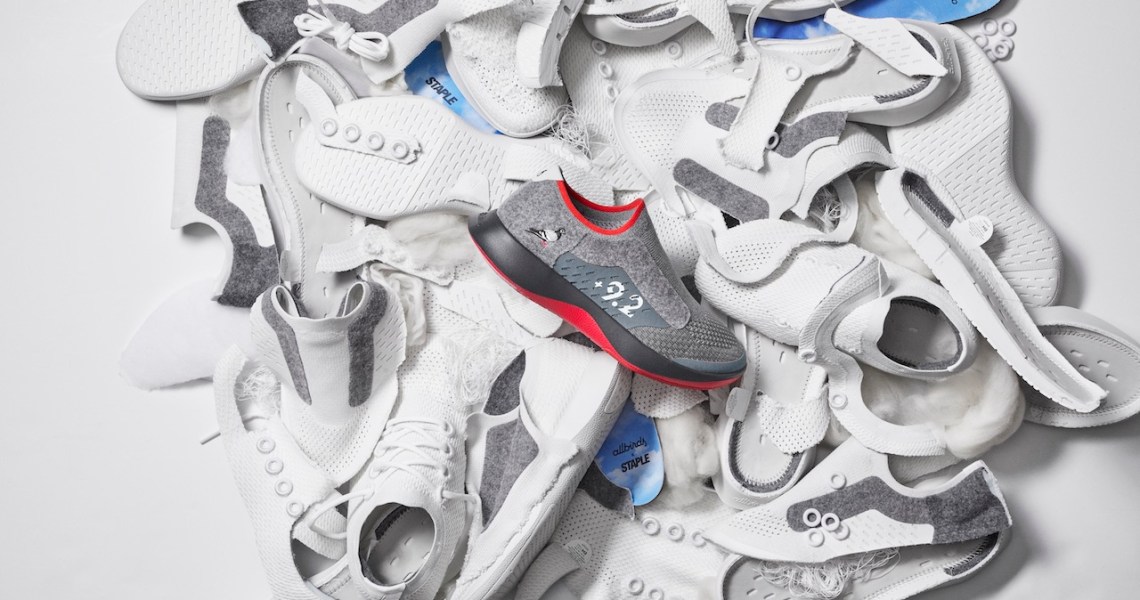Allbirds’ valuation has skyrocketed over the last few years. Its latest $100 million funding round in September put it at around $1.7 billion and fueled rumors of a forthcoming IPO. While that’s huge growth over the seven years it’s been in business, it’s still a fraction of Nike’s annual footwear revenue of more than $24 billion and Adidas’ $15 billion.
Nike’s been the No. 1 selling sneaker brand for at least the last five years, thanks to the hype built around its many product releases throughout the year. Any footwear company that wants to grow a significant size will inevitably end up bumping against Nike, but it’s unlikely that Allbirds will go head-to-head against the brand, despite recent comparisons. Co-founder Tim Brown said he has no intention of aping Nike’s business model or strategies.
A major component of Nike’s market dominance to date has been the hype it’s been able to build around its frequent releases and sneaker drops. Between collaborations, new models, new colorways of existing models and special editions, Nike releases more than 100 new sneakers every year. The high resale value of drops often make Nike releases appealing to sneakerheads, while its vast catalog of lower-priced, more basic shoes cater to the casual consumer.
Allbirds is taking a different approach to growth.
“I’ve tried to make us the opposite of Nike almost,” Brown told Glossy in December. “The initial idea of Allbirds was all about the reduction of the shoe down to its simplest form, which is the opposite of the streetwear model, with small changes and a million different models. So we want to compete and we want to grow, but we want to do it in a completely different way [by opening retail stores and broadening the audience].”
Allbirds only has three running shoe models, and each comes in less than 10 colorways. Collaborations are few and far between, with only three being released last year. Notably, among those designers were Chinatown Market and Jeff Staple, both of which are closely associated with the streetwear world that Nike dominates, rather than the casual and workwear markets that are its primary target. At the time, Brown said he wanted to try and attract some sneakerhead consumers, without switching to the Nike business model.
Nike has an even 50% split of online and offline sales, while Allbirds’ 23 stores around the world make up less than a quarter of its revenue. Allbirds plans to increase that fleet to 36 stores by the end of 2021, opening in new markets to further increase its reach. Nike spent more than $3.7 billion in marketing costs last year, equivalent to more than $300 million per month. Allbirds did not respond to request for current figures, but in 2016, the brand was spending $400,000-$500,000 per month on marketing.
Ad position: web_incontent_pos1
“Allbirds is poised to compete with giants such as Nike, however, competing with Nike will come at a cost,” said Mousumi Behari, digital strategy practice lead at e-commerce consultancy Avionos. “Allbirds will need to increase its marketing spend while also investing in retail stores, in order for consumers to get familiar with its product and brand.” Nike’s wide, global reach spans mobile apps (especially the SNKRS app), physical stores, e-commerce and social platforms, while Allbirds’ consumer touchpoints are comparatively narrow, Behari said.
With Allbirds approach, customers are encouraged to buy a single pair of shoes and wear it for years. Therefore, its approach requires a higher level of rapid customer acquisition and audience growth than Nike’s, according to Gil Eyal, partner at influencer marketing company Starfund. That kind of acquisition is usually built on a big advertising spend with investor money, and isn’t often sustainable long term.
“While we have to admire what Allbirds has been able to achieve, I doubt they’ll be able to replicate Nike’s success,” Eyal said. “By creating a high-quality shoe you love and will hold on to for many years, you are reducing the lifetime value of customers who will not be buying a third or fourth pair for a long time. That’s unlike Nike customers, who will buy multiple sets of shoes to ensure they are most up-to-date and have the shoes of the athletes they love, and replace shoes that are worn.”




